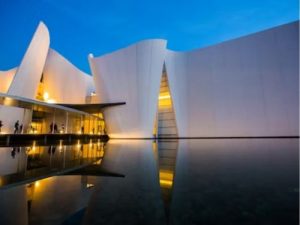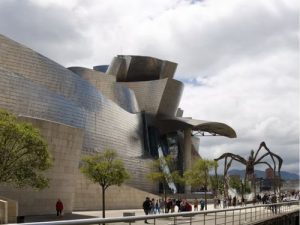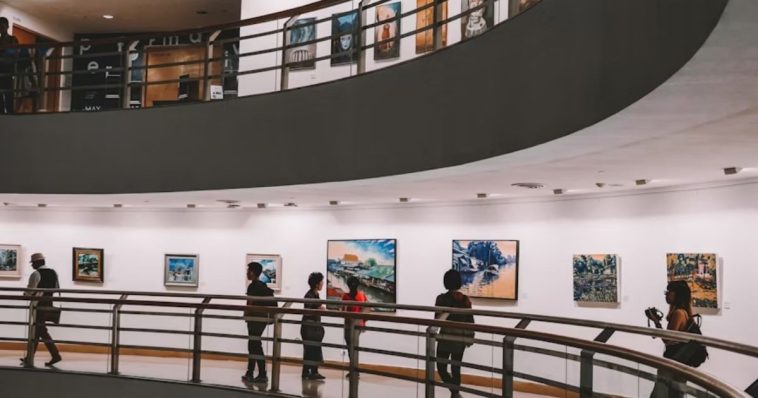Art and architecture are more than just aesthetic pursuits—they are reflections of culture, history, and human ingenuity. Traveling to experience art and architecture in situ allows visitors to immerse themselves in the physical spaces that shaped civilizations, understand the stories behind masterpieces, and witness how creativity manifests across different regions and eras. Art and architecture tours are designed to combine sightseeing with education, offering travelers an enriching journey that stimulates both the mind and the senses.
Understanding Art and Architecture Tours

Art and architecture tours are specialized travel experiences that focus on exploring iconic buildings, historic sites, museums, galleries, public installations, and architectural landmarks. These tours appeal to a diverse audience, including art enthusiasts, history buffs, architecture students, photographers, and anyone seeking a deeper connection to a destination’s cultural and artistic heritage.
Unlike conventional sightseeing trips, these tours often provide curated experiences led by knowledgeable guides, architects, or historians. They may include interactive elements, workshops, or behind-the-scenes access to studios, private collections, or conservation projects. For travelers seeking a more personalized experience, private art and architecture tours offer customized itineraries tailored to specific interests, whether it’s Renaissance frescoes in Florence, Bauhaus design in Berlin, or contemporary street art in São Paulo.
The Role of Art and Architecture in Cultural Tourism
Art and architecture are windows into a society’s soul. Every structure, from a centuries-old cathedral to a modernist skyscraper, tells a story of the people who built it, the resources they had, and the cultural values they embraced. Art and architecture tours allow travelers to:
- Connect with History: By exploring ancient temples, medieval castles, or Renaissance palaces, travelers gain insight into historical events, societal hierarchies, and the evolution of artistic techniques.
- Appreciate Innovation: Modern architectural marvels, such as the Guggenheim Museum in Bilbao or Dubai’s Burj Khalifa, showcase engineering ingenuity and contemporary design trends.
- Experience Local Culture: Public art, murals, and vernacular architecture reveal the lifestyle, traditions, and identity of communities worldwide.
- Engage with Creativity: Tours often encourage participation in workshops, photography sessions, or sketching exercises, allowing visitors to interact creatively with their environment.
Types of Art and Architecture Tours
Art and architecture tours come in a wide variety of formats, designed to suit different interests, levels of expertise, and travel budgets. Whether you are a first-time traveler seeking cultural highlights or a seasoned enthusiast looking for deep immersion, there is a tour tailored to your tastes. Here are the most common types:
1. Museum and Gallery Tours
Museum and gallery tours center on curated collections, spanning from classical masterpieces to cutting-edge contemporary art. These tours provide visitors with guided insights into famous paintings, sculptures, and installations, often highlighting the stories behind the works and their historical significance. Cities such as Paris, London, New York, and Florence are renowned for their museum circuits, which can span several days. Visitors can explore art movements ranging from the Renaissance and Baroque to Impressionism, Modernism, and Abstract Expressionism, gaining an understanding of how artistic techniques, themes, and cultural influences evolved.
2. Architectural Walks and City Tours
Architectural walks and city tours offer a hands-on exploration of urban landscapes, highlighting iconic buildings, historic neighborhoods, and innovative structures. Participants can admire the intricate details of Art Nouveau façades in Brussels, trace the soaring spires of Gothic cathedrals in Prague, or discover the sleek lines of Modernist apartments in Barcelona. Knowledgeable guides provide historical context, architectural terminology, and behind-the-scenes anecdotes about the designers, patrons, and construction methods. These tours often reveal hidden architectural gems that are easily overlooked when traveling independently, making the city itself a living museum.
3. Thematic and Specialized Tours
Thematic and specialized tours are ideal for travelers with a focused interest in a particular style, period, or architect. For example, Frank Lloyd Wright enthusiasts can embark on tours of his iconic homes and public buildings across the United States, learning about his philosophy of organic architecture. Renaissance aficionados may follow a curated itinerary in Florence, tracing the footsteps of Michelangelo, Brunelleschi, and Botticelli while exploring palaces, churches, and public squares. Specialized tours often provide in-depth lectures, site-specific workshops, or exclusive access to private collections, allowing participants to engage deeply with their area of interest.
4. Contemporary and Street Art Tours
Modern cities worldwide have embraced public art as a dynamic and interactive form of cultural expression. Contemporary and street art tours guide travelers through neighborhoods adorned with murals, graffiti, installations, and experimental artworks. Berlin, Lisbon, and Melbourne are prime examples of cities where street art has become an integral part of their urban identity. Guided by local artists or art historians, participants learn the social, political, and cultural stories behind the works while exploring the city on foot or by bike. These tours often include opportunities for photography, interviews with artists, or even participatory street art workshops.
5. Multi-Destination and International Tours
Multi-destination and international tours offer a broader perspective, connecting art and architecture across cities, regions, or entire countries. A European art tour, for instance, might start in Venice, exploring its romantic canals and palazzos, continue in Florence for its Renaissance masterpieces, and end in Paris with its Impressionist galleries and iconic landmarks. These tours often combine museum visits, guided city walks, and architectural excursions, allowing travelers to understand how cultural and artistic movements influenced multiple regions over time. Such itineraries are ideal for travelers seeking an immersive experience that blends history, aesthetics, and cultural discovery on a larger scale.
Notable Destinations for Art and Architecture Tours
Here’s a curated selection of destinations renowned for their art and architectural heritage:
- Italy: Florence, Rome, Venice, and Milan are treasure troves of Renaissance art, Baroque architecture, and iconic landmarks.
- France: Paris offers the Louvre, Musée d’Orsay, and countless modernist architectural gems, alongside Gothic cathedrals like Notre-Dame.
- Spain: Barcelona is synonymous with Gaudí’s surreal creations, while Madrid and Seville showcase both classical and contemporary Spanish art.
- The United States features a mix of museums, skyscrapers, and innovative urban design in New York and Chicago, while the American South preserves antebellum architecture.
- Japan: Tokyo and Kyoto blend traditional wooden temples with modernist urban architecture, including minimalist designs and contemporary art museums.
- Germany: Berlin’s Bauhaus legacy, neo-classical monuments, and street art culture make it a dynamic destination for architecture enthusiasts.
- Middle East: Dubai and Abu Dhabi boast futuristic skyscrapers, while historical sites in Jerusalem and Petra offer architectural wonders from ancient civilizations.
Planning Your Art and Architecture Tour
Effective planning enhances the experience of an art and architecture tour. Consider these steps:
- Identify Your Interests: Determine whether your focus is on classical art, modern architecture, street art, or a combination of these.
- Research Guides and Companies: Experienced guides add immense value, providing historical context, hidden gems, and insider stories.
- Prioritize Key Sites: Large cities often have numerous attractions; create a realistic itinerary to avoid rushing through them.
- Timing Matters: Some museums or architectural sites have restricted hours, seasonal exhibitions, or renovation schedules.
- Document Your Journey: Photography, sketching, or journaling helps capture details and create lasting memories.
- Engage Locally: Attend workshops, lectures, or interactive sessions to deepen your understanding of local artistic traditions and cultures.
Benefits of Art and Architecture Tours
Participating in art and architecture tours goes far beyond simple sightseeing—it is an immersive, educational, and transformative experience that engages the mind, emotions, and senses. These tours offer travelers the opportunity to develop a deeper appreciation for culture, history, and creativity while providing lasting personal and intellectual benefits.
Cognitive Enrichment
Art and architecture tours are a feast for the mind. Exposure to diverse artistic styles, design philosophies, and architectural techniques from different regions and historical periods significantly expands cultural literacy. Visitors gain insights into the evolution of societies, learning how political, religious, and social contexts influenced creative expression. For instance, understanding why Gothic cathedrals emphasize verticality and light, or why Renaissance paintings focus on humanist ideals, enriches knowledge beyond textbooks. These experiences sharpen analytical skills, stimulate critical thinking, and foster a more nuanced understanding of how creativity has shaped human history.
Emotional Engagement
Art has the power to evoke strong emotions, and architecture creates spaces that influence mood and perception. Tours allow travelers to connect deeply with these experiences—standing before a monumental fresco, walking through a serene Japanese garden, or marveling at a contemporary urban structure can evoke awe, inspiration, nostalgia, or even introspection. These emotional connections make the travel experience more memorable and impactful. Beyond admiration, engaging with art encourages empathy, as travelers learn to understand the cultural and historical contexts that inspired the creators, fostering a greater appreciation for human expression across borders.
Visual Appreciation
A core benefit of these tours is the cultivation of a trained eye for aesthetics and design. Travelers learn to recognize principles such as balance, symmetry, proportion, and the interplay of light and space. Architectural tours, for instance, provide insights into how form, function, and context work together to create meaningful structures, while art tours reveal techniques in color, perspective, and composition. Over time, this visual literacy enhances one’s ability to perceive subtle details, critique design thoughtfully, and notice beauty in everyday life—from urban streetscapes to home interiors.
Personal Growth
Art and architecture tours nurture personal development by fostering curiosity, creativity, and reflection. Observing historical structures and masterpieces encourages travelers to ask questions, compare styles, and explore alternative perspectives. The immersive nature of these tours promotes mindfulness, observation, and attention to detail. At the same time, workshops or participatory experiences allow travelers to engage creatively, trying their hand at sketching, modeling, or photography. Such interactions cultivate problem-solving skills, adaptability, and a heightened sensitivity to cultural diversity. Ultimately, these tours foster a deeper connection with the world, leaving travelers enriched, inspired, and more open-minded.
Future Trends in Art and Architecture Tours

The tourism landscape is evolving, and art and architecture tours are no exception:
- Virtual and Augmented Reality: Digital tools enable tourists to explore 3D reconstructions of historical sites or overlay artistic information on buildings in real-time.
- Sustainable Tourism: Tours increasingly focus on eco-friendly practices, adaptive reuse of heritage buildings, and responsible visitor engagement.
- Interactive Experiences: More tours include participatory workshops, collaborative art projects, and immersive design labs.
- Cross-Cultural Experiences: Travelers are seeking connections between art, architecture, and local traditions, merging culinary, musical, and storytelling elements into tours.
A Journey Through Time, Culture, and Creativity
Art and architecture tours provide a profound way to experience the world. They bridge the gap between history, creativity, and culture, allowing travelers to see beyond façades and into the heart of human ingenuity. Whether tracing the brushstrokes of Renaissance masters, walking through Gothic cathedrals, or marveling at modern skyscrapers, these tours turn travel into an enlightening, visually stunning, and unforgettable journey.
By immersing yourself in art and architecture, you gain not only memories but a richer understanding of the cultural threads that weave the world together. Each city becomes a living gallery, each building a narrative, and each artwork a dialogue between the past, present, and future.



